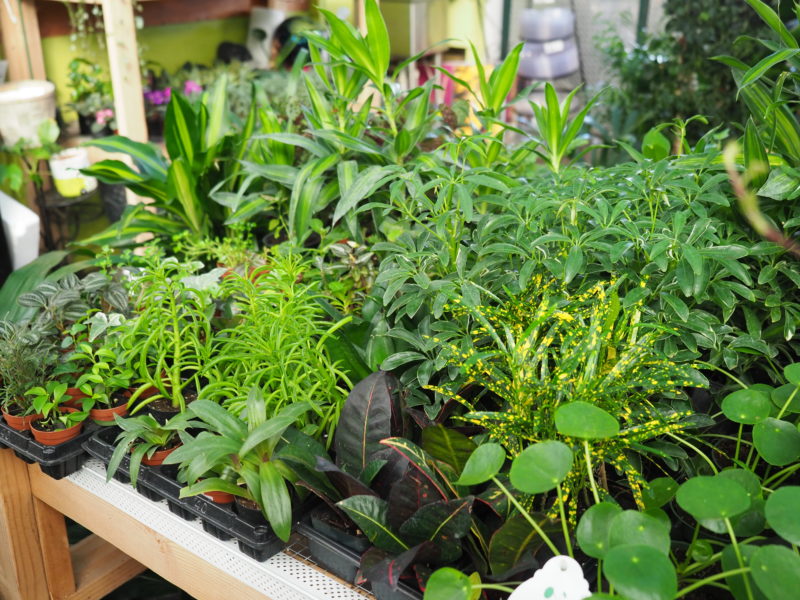

We’re within days of the holiday season, and since it’s so hard to find things this year I thought I’d offer an early rendition of my gift suggestions for your favorite gardener or gardeners as well as the kids and grandchildren. And don’t forget yourself. Who else knows what we want and need more than us?
First some books and a magazine. It’s nearly impossible to find a gardening magazine that’s pertinent to our zone and area, but The Connecticut Gardener has been my favorite for a decade. Brought to us by the husband and wife team of Anne and William Rolands and printed in the old 8.5-by-11-inch format, it’s actually readable while other garden magazines have shrunk in size and text. The editorial content is just great as they use writers and experts they have long personal relationships with. The articles are detailed, always have great pictures and each piece usually has pertinent references for further reading. While the magazine has only five issues a year (available in print, digital or both) it’s a treasure trove of garden information that you just don’t find anywhere else. But you say “Connecticut?” Yeah, it’s that place just across Long Island Sound. Find out more at store.conngardener.com. Print alone is $22, but there are other options.
If you know a lover of perennials, they must have the latest edition of Alan Armitages’s “Herbaceous Perennial Plants: A Treatise on their Identification, Culture and Garden Attributes” ($89 hardcover, $79 paperback). There have been dozens of books written on perennials but nothing like this. It’s the fourth edition of the book. While it’s used in many colleges, it’s totally readable for gardeners and a single, concise text with just about every piece of information you need to grow specific perennials. A great resource before you or your giftee spend hundreds or thousands on that perennial garden. It’s been my go-to resource on perennials.
With the legalization of marijuana (cannabis) in New York, many will be or are taking the opportunity to grow their own. And while I noted several months ago that the secret is in getting the best seed, there’s much, much more involved in being able to grow the best pot. Ed Rosenthal’s “Cannabis Grower’s Handbook” could be the perfect book for anyone wanting to grow their own and do it well. The book includes sections on the plant’s history, the limiting factors of its growth including nutrients, temperatures, light and lighting (if indoors), harvesting, processing and much more. It’s essentially one of the best guides to growing your own and is well written for the beginner as well as those who think they know it all. The book is available in several formats, but the paperback is about $45 on Amazon.
I love my weather station(s), but I’ve always been a weather nut. Having your own station used to cost nearly $1,000, but that’s all changed and so has their reliability. Why does a gardener need one? If your gardens are in the Hamptons and you don’t live out here full time, your weather station will let you know what’s going on. It’ll keep track of temperatures. (Did it freeze last night in Springs?) How much rain really fell in Southampton. (Down to the 10th of an inch.) Did the wind blow down my clematis? (Speed and direction.) And all these elements and more can be recorded for historical reference. In many of these units, the information can be sent directly to your phone. They are not toys, but helpful landscape and garden instruments that will last for years.
The Tempest weather station (bit.ly/3c78EIy) is one of the newest and it’s notable for having no moving parts that can jam, break, or need repair. It costs about $330, and it’s easy to set up out of the box. It transmits the data via a wireless link and can send updates to your phone. Mine gives me alerts when it’s raining, which is very helpful when I’m away for days or a week, as it will also give me an accumulation chart and plenty of other data. Simple to mount on a pole and running on solar power, just set it up and forget about it. The only downside is the lack of external probes for something like soil moisture, but I can live without that.
Right next to my Tempest is my Davis Vantage Pro 2, which I’ve had in operation for close to 15 years. This is a mechanical weather station with a tipping mechanism that measures rain, a mechanical anemometer with spinning cups and a mechanical wind vain. It transmits to a console in the house, stores the data on a computer and transmits the data to Weather Underground, where it’s made public and stored. This station is subject to damage from birds landing on it and debris accumulating in the rain collector, but I think it’s much more precise and accurate than the Tempest. And this accuracy may not be necessary for most. Davis has other models, and all are available from davisinstruments.com and other vendors.
Ambient Weather (ambientweather.com) has weather stations ranging in price from $110 up to more than $500, depending on what you want to know and how you want to know it. They have both mechanical and non-mechanical stations, as well as different sensors that can be attached to the stations for a wide range of functions both indoors and out. They’ve also been very helpful with support and sell a range of other inexpensive thermometers/sensors with outdoor sensors and small indoor displays that will show temperature and humidity both indoors and out without any wires. Many options here, so a gift certificate might be best unless you know what your giftee wants and needs.
For the gardener who wants or needs to extend the gardening season to have home grown salad greens, carrots, radishes and beets through late fall and even the winter, take a look at the Juwel cold frames. The smaller models cost about $160 and can be assembled in just a few minutes, while the 1500-NP model is 5 feet long and 32 inches deep. There are accessories for both models, such as automatic openers. These are available through Wayfair.com and Amazon, and Lowe’s offers three models, as does Walmart. There are lots of knock offs that will not hold up like the Jewel does, so even if you have to wait for one to get back into stock, it’ll be worth the wait. Any Jewul model will open a new world of growing options for every gardener.
A few small garden tools to suggest this year: I’ve always had a strong, forged steel hand trowel nearby for small digging projects. In fact, I have several. These won’t bend and break like the flimsy hand trowels found in garden centers and one of mine has been around for a decade or more. This trowel has a deep socketed neck that’s riveted to the hardwood handle, ensuring that the blade won’t become detached. And since it’s forged steel and not thin stamped steel, it’s up to any digging task. You can find one here at A.M. Leonards: bit.ly/3kgK2BG. At $18, it’s a bargain.
You may not be familiar with a dibble or dibbler, but they come in handy when planting small bulbs, cell pack transplants and seedlings. There are two types, one with a curved and somewhat ergonomic handle and the other with a T-style handle. The Bosmere Haws P818 is available at Amazon for $18, but there’s a much nicer one available from AMleo.com for $44 or from Bulldog Tools (bit.ly/3qi9hHr) for $39.
And I haven’t forgotten the kids. Just about every garden center and plant store has a selection of tropical plants and succulents in 2-to-3-inch pots that cost from $3 to $5 each. A collection of a dozen of these along with your astute directions on how to grow them has the potential to leave a critical learning experience that will last a lifetime and such a worthwhile investment. Teach them about how plants use the sun, why they need repotting and where they come from in the world. It becomes a horticulture, science and geography project.
Younger children should be limited to succulents like jade plants and Aloe vera as well as the traditional tropicals. Older children may find a cacti collection easier to care for, but make sure they understand that the spines on these plants can be painful and irritating. Show them how to handle them and urge caution, but not fear. Venus fly traps are tempting, but they quickly die and are difficult to care for. The last thing you want these budding gardeners to have is a dead plant and a sense that it was their fault. Venus fly traps belong in bogs and terrariums, not window sills.
And for the adults, there are always gift certificates. For those just getting into gardening, bluestoneperennials.com is a great place to start, since they offer perennials and a few tress and shrubs but nothing very exotic. Plantdelights.com, on the other hand, offers a wide range of perennials that you won’t find elsewhere or locally. A copy of their exceptional catalog comes with each gift certificate. Gracefulgardens.com is an upstate nursery that’s known for its Delphiniums (22 varieties). You need to order them by the tray (four plants per pack and 32 plants per tray), so keep that in mind when ordering the plants or giving a gift certificate.
Happy shopping. I hope you get the garden plants and tools you or your giftee needs. Keep growing.
 More Posts from Andrew Messinger
More Posts from Andrew Messinger